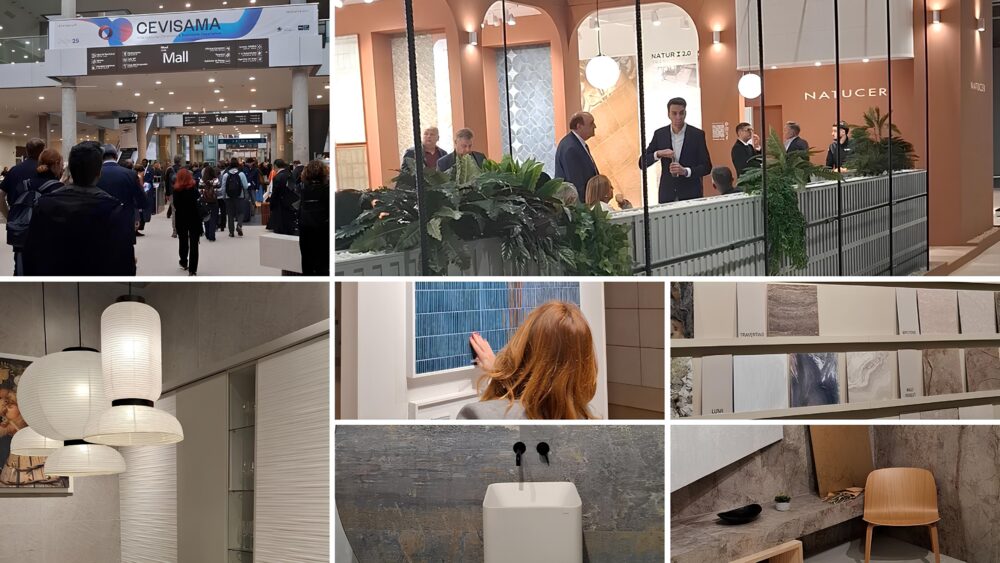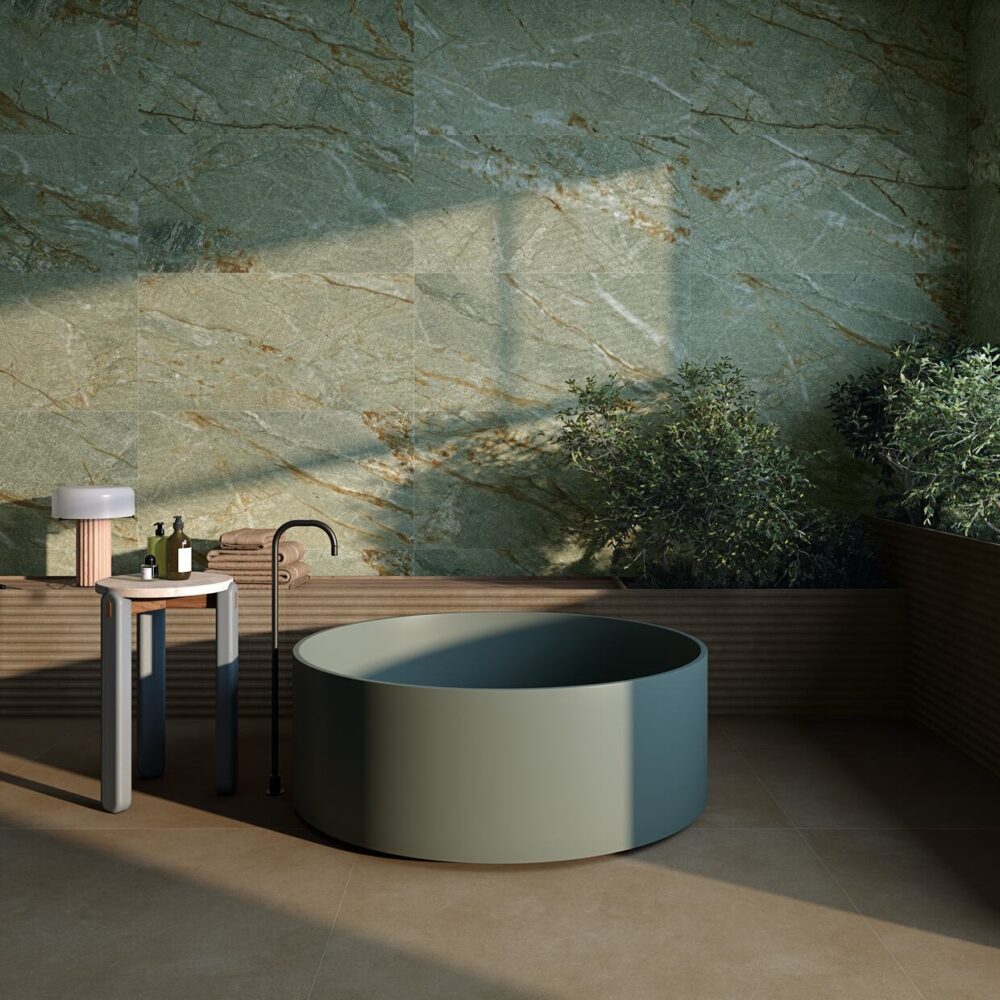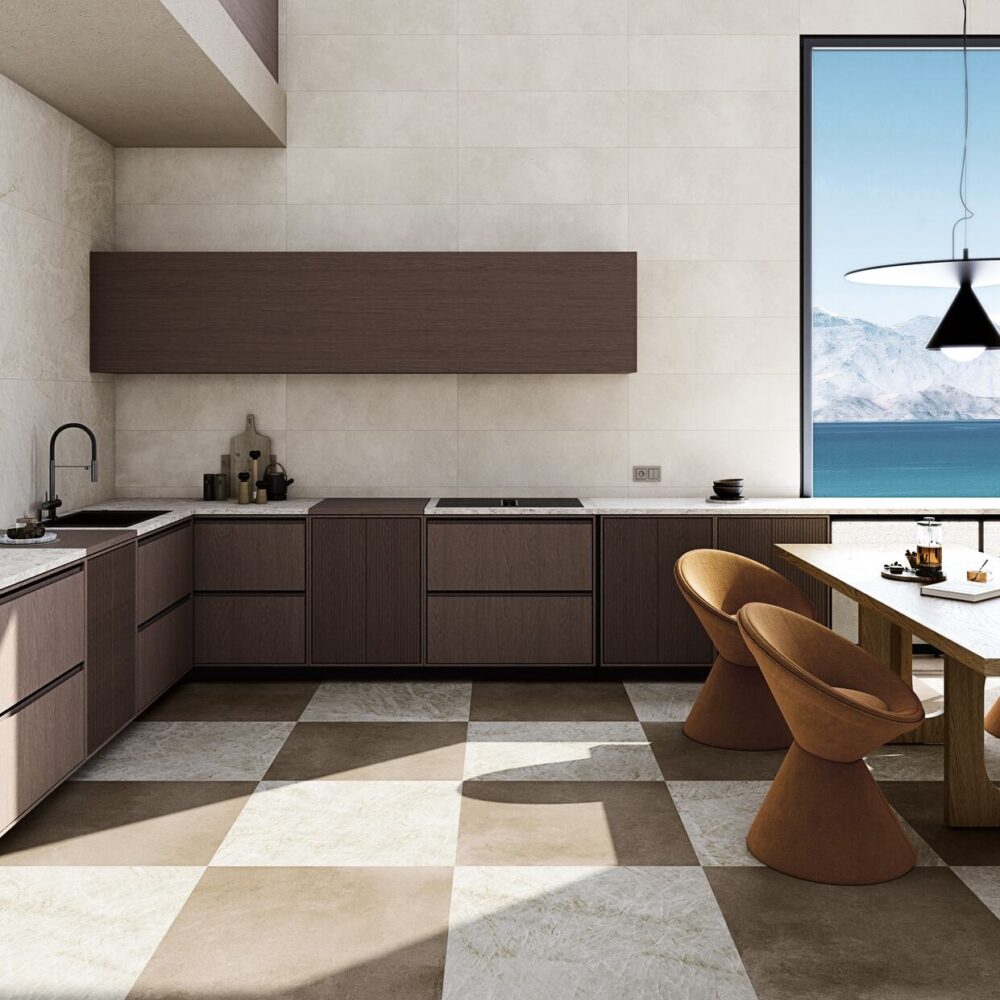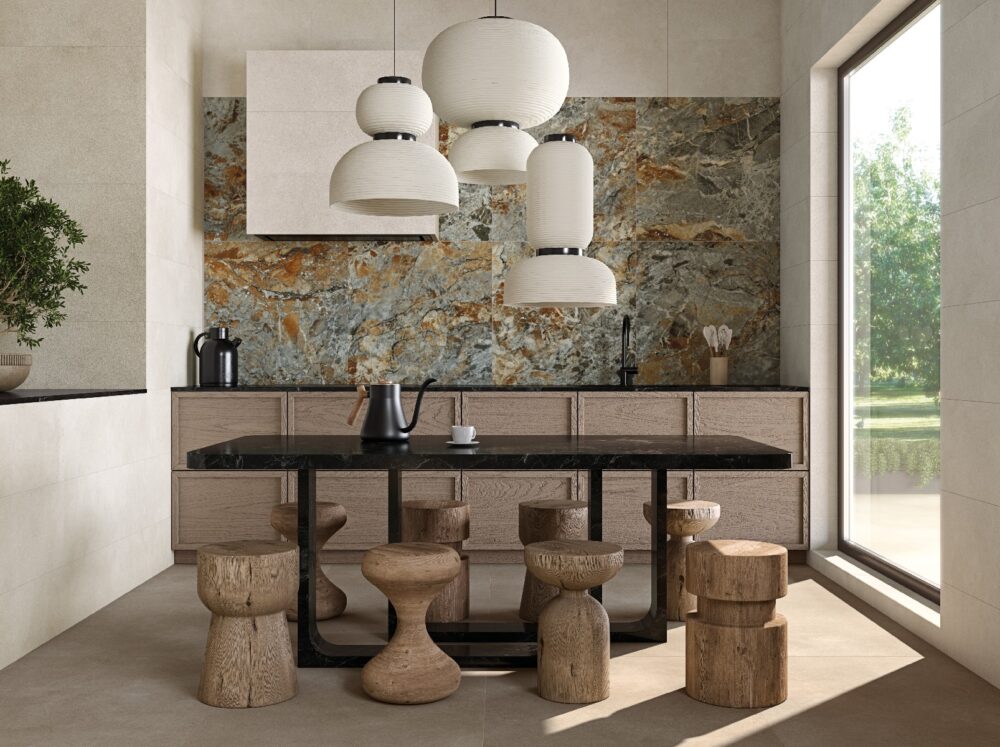During the press conference at Cevisama 2025, Spanish ceramic industry leaders highlighted design trends such as large-format tiles, indoor-outdoor transitions, near-zero-waste production, energy-efficient materials, and more.
February 24 – 28—The international press conference on the tile market in Spain, held during Cevisama 2025, provided key insights into the country’s leadership in ceramic production and the evolving trends shaping the industry. Hosted by the Spanish Tile Manufacturers Association (ASCER), the event brought together leading experts, media, and industry professionals to discuss the role of innovation, sustainability, and market shifts within the ceramic sector. With its strong export position and commitment to quality and design, Spain remains a global player in ceramics.
Over 40 companies from ASCER are exhibiting at Cevisama. This reflects the vibrant activity within the sector and the increasing demand for Spanish tiles globally. Despite challenges posed by rising production costs and fluctuating international demand, Spain’s tile sector continues to hold its ground. In 2024, exports reached 3,479 million euros, with the European Union absorbing over 40% of exports and the United States standing out as the largest individual destination for Spanish ceramics at 13.5%. Domestically, Spain’s market grew by 3.1%, contributing 1,340 million euros to the sector’s revenue. These figures illustrate Spain’s robust position in international and domestic markets, although the sector has had to adapt to external pressures such as economic shifts and rising interest rates.

Innovation and Design: Blending Tradition with Modernity
One of the core themes discussed at the conference was the fusion of historical elements with contemporary design trends, demonstrating how Spanish ceramics have maintained their unique identity while embracing modern aesthetics. Speakers highlighted how historical influences, such as traditional enamels and marble finishes, are reinterpreted to fit current interior and architectural design. For example, designs inspired by geology, with textures that evoke a tactile and emotional connection, are increasingly popular in flooring and wall applications. These materials, often with natural and worn finishes, blend seamlessly into modern spaces while carrying the warmth and richness of the past.
Ceramic companies are also pushing the boundaries of technology, introducing innovative large-format tiles that create a sense of spatial continuity between indoor and outdoor areas. These advancements align with the growing demand for versatile materials that can be used across different environments. Eliminating barriers between interior and exterior spaces is a key design trend, with ceramics playing an integral role in achieving this seamless flow. Large-format ceramics are particularly valued for their durability and ease of maintenance. They’re sought after for their aesthetic appeal and practical functionality in settings such as kitchens, bathrooms, and pool areas.
Technological advancements in ceramics also address the growing consumer demand for surfaces that promote well-being and comfort. The use of serene colors, soft textures, and tactile finishes is becoming increasingly popular as homeowners and designers seek to create spaces that are not only visually pleasing but also emotionally soothing. Speakers at the conference pointed out how the versatility in color and texture of ceramics contributes to creating environments that promote physical and emotional well-being.
“People today are looking for tranquility and comfort in their surroundings, and ceramics can provide just that,” one speaker noted.





Sustainability at the Core of Spanish Ceramics
In addition to design innovation, Spain’s ceramic industry is distinguished by its commitment to sustainability. As a global leader in nearly zero-waste production, the sector has made significant strides in reducing its environmental footprint. In 2023, the industry recycled 93% of its waste, resulting in a savings of 810,000 tons of raw materials. Water consumption was also reduced by 923 million liters, a volume comparable to that of 37 Olympic-sized pools. These impressive figures reflect the industry’s dedication to resource efficiency, a key driver behind Spain’s success in domestic and international markets.
Another crucial aspect of sustainability in Spanish ceramics is the industry’s focus on energy efficiency. The use of ceramic facades in buildings has been shown to reduce energy demand by up to 50%, depending on the climate. This has important implications for the construction industry, where the need for sustainable building materials is rapidly increasing. Ceramics, known for their excellent behavior in the face of fire and their long lifespan of up to 50 years, are becoming a preferred material in sustainable architecture.
The importance of sustainability extends beyond environmental impact to include a deep respect for the people involved in the ceramic industry. Spain’s ceramic sector is characterized by a strong sense of social responsibility, employing over 15,700 people, many of whom work in family-owned businesses. Fair working conditions, equal opportunities, and continuous training are central to the industry’s success.
“Human talent is our main asset,” a speaker said, emphasizing how Spain’s ceramics are not only products but are deeply tied to the people who design, manufacture, and distribute them.

Respect: The Secret Ingredient of Spanish Ceramics
At the heart of Spain’s ceramic success is the concept of respect. This core value informs every aspect of the industry’s operations, from its environmental practices to its relationships with customers and partners. Respect is seen as the secret ingredient that differentiates Spanish ceramics from other global producers.
“Respect is more than how we do things; it’s why we do things,” a representative at the conference explained, underlining the industry’s commitment to long-term sustainability and high-quality products.
This respect extends to the innovative spirit that drives the industry forward. Spain has long been a leader in ceramic innovation, blending cultural heritage with cutting-edge technology to create products that meet modern design needs. With its high concentration of ceramic production in the Castellón region, Spain has developed a robust ecosystem that fosters rapid innovation. As a result, Spanish ceramics are at the forefront of design and technology, often setting global trends in interior design and architecture.
The industry’s respect for its customers is also a key factor in its success. Spanish ceramic companies go beyond simply selling products—they build long-term partnerships with clients, offering tailored services, training, and promotional support. Whether it’s through personalized solutions or after-sales services, Spanish ceramic producers prioritize customer satisfaction and work to create lasting value in the markets they serve.










